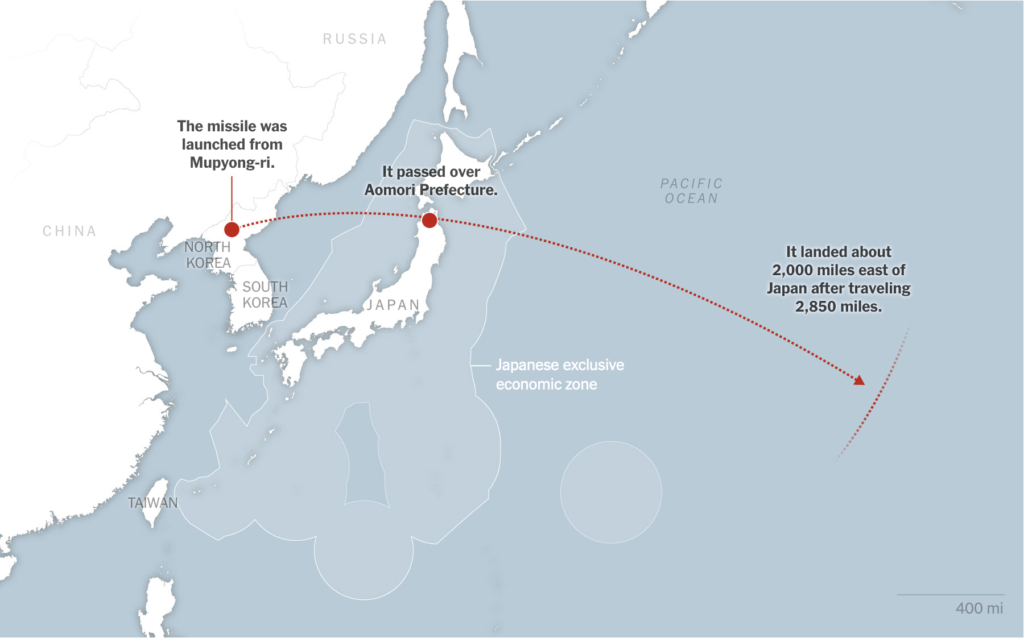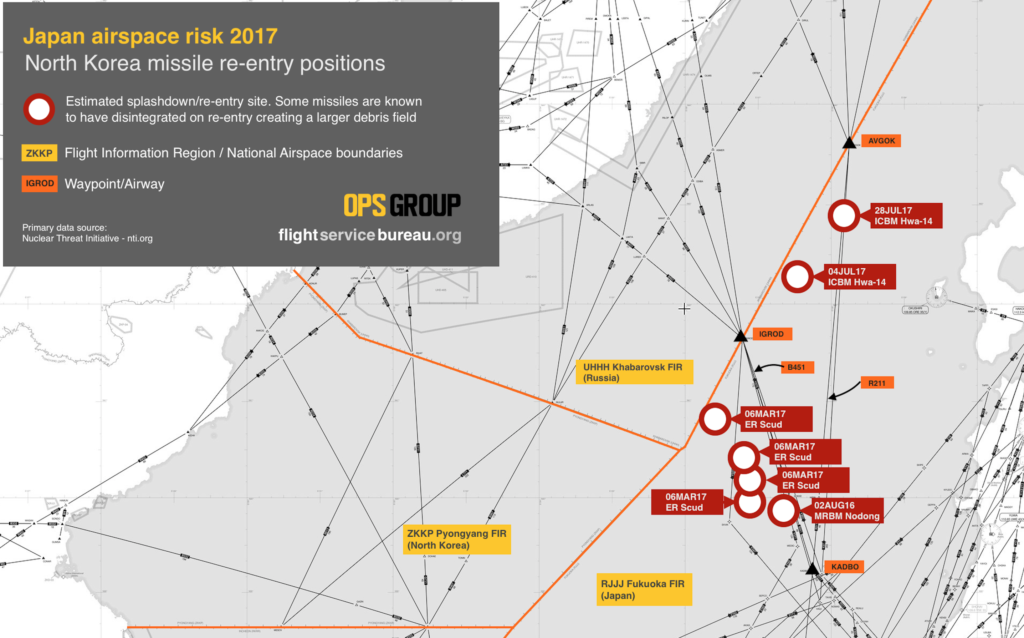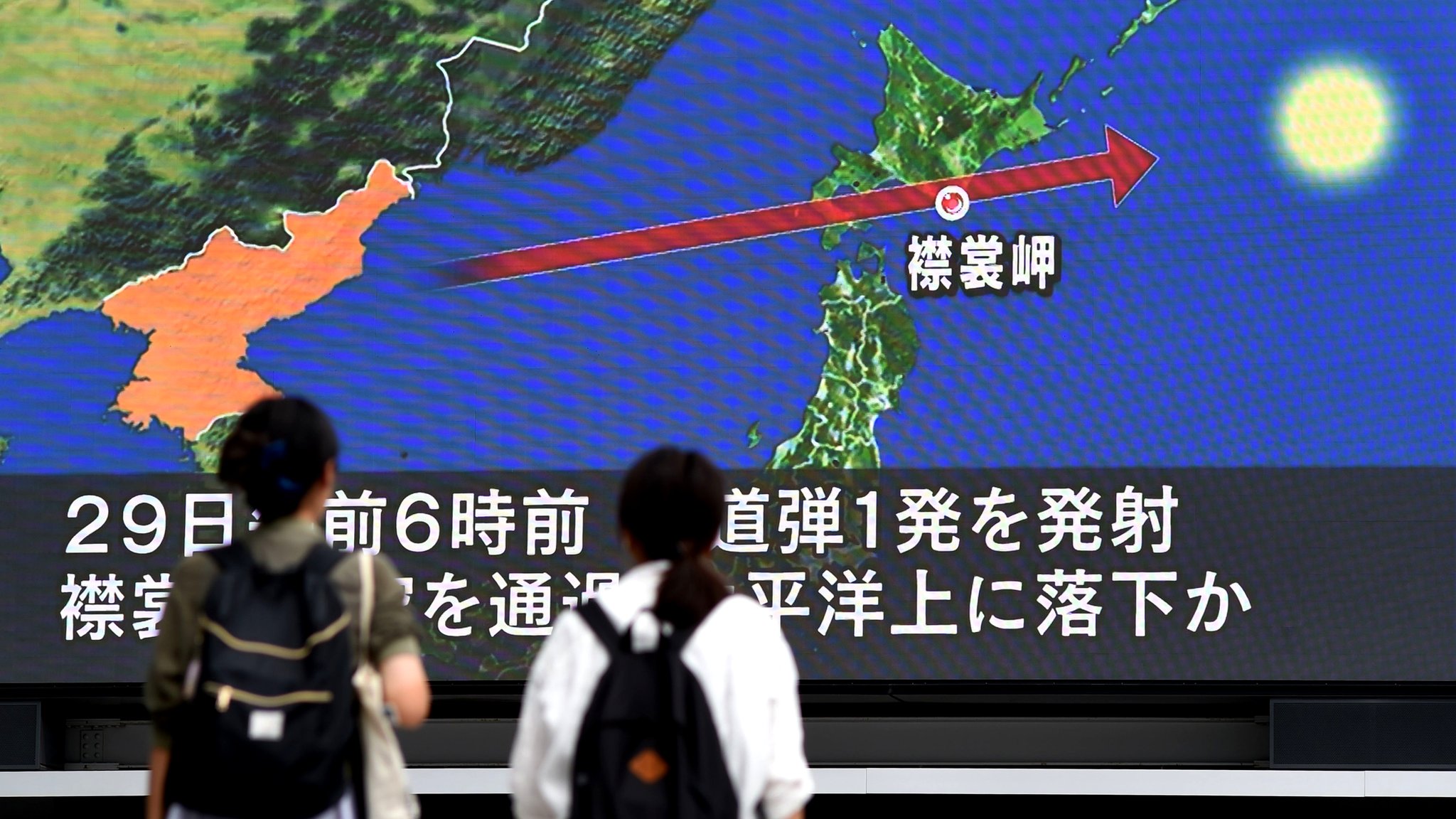North Korea regularly launch projectiles without announcement. These have minimal impact on international flight operations since they fall short of the major airways.
However, this past week has seen five projectiles launched from Pyongyang, and the most recent – a ballistic missile – did pose a very significant threat due to a path which carried it directly over Japan.
Several governments have issued statements regarding the latest launch, and previous launches.
Where did the missile go?
On October 4, Pyongyang launched a suspected ballistic missile over Japan. The path took the missile directly over Hokkaido island, prompting Japan to issue alerts to their citizens. It subsequently fell into the Pacific Ocean.
The 2800 mile path is depicted below. The missile reached an altitude of around 1000km.

Source: Japanese Government. By: Pablo Robles.
Previous launches.
This is the fifth launch in the last week. The launches often coincide with joint US, South Korean and Japanese military drills, or political meetings. There have been a spate of them throughout 2022, with the last reported in August.
In 2018, five launches were carried out over 10 days after a US aircraft carrier made a port call in South Korea.
This is the first launch since 2017 which has seen a projectile incur on Japanese airspace.
How high is the Threat Level?
Following talks with the US in early 2018, North Korea agreed with ICAO that it would provide adequate warning of all “activity hazardous to aviation” within its airspace. However, in May 2019 North Korea resumed launching missiles into the Sea of Japan, without providing any warning by Notam.
The ZKKP/Pyongyang FIR is rarely utilised for overflights by foreign aircraft, and the missiles are usually launched into the Sea of Japan, causing little damage or disruption and falling outside the Japanese EEZ. However, there is an ongoing threat to aircraft operating in the ZKKP/Pyongyang FIR due to unannounced launches and risk from falling debris.
North Korea has multiple airspace warnings from several major authorities. The threat level has not changed.

Risk map from 2017. The debris fall areas remain the same.
A full list of the current major cautions and warnings regarding the airspace, and a full briefing on North Korea can be found on Safeairspace.net
Japan threat levels.
Launches towards or over Japan pose a much more significant threat, because the path towards the sea and the debris fall area are crossing or within sections of airspace used by civilian flights.
North Korea is suspected of attempting to show how their range could impact US military bases in Guam and is not directly targeting Japan, or threatening the airspace. The missiles fall well beyond the airways, however, with the launches being unannounced and potentially growing in frequency, a higher risk level and caution should be taken with operating in the region.

More on the topic:
- More: South Korea Airspace Risk Update
- More: Airspace Risk Update – Important Changes You May Have Missed
- More: Asia Airspace Risk: Why North Korea’s Lastest Launch Matters…
- More: Get ready for more North Korean missiles
- More: Airspace Risk: Conflict Zones and Security in 2023
More reading:
- Latest: Teterboro: RIP the RUUDY SIX
- Latest: 400% increase in GPS Spoofing; Workgroup established
- Latest: GPS Spoofing WorkGroup 2024
- Safe Airspace: Risk Database
- Weekly Ops Bulletin: Subscribe
- Membership plans: Why join OPSGROUP?











 Get the famous weekly
Get the famous weekly 





